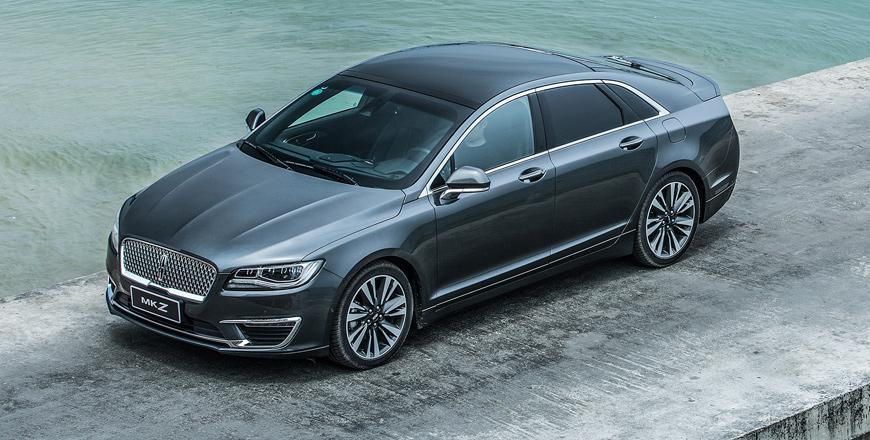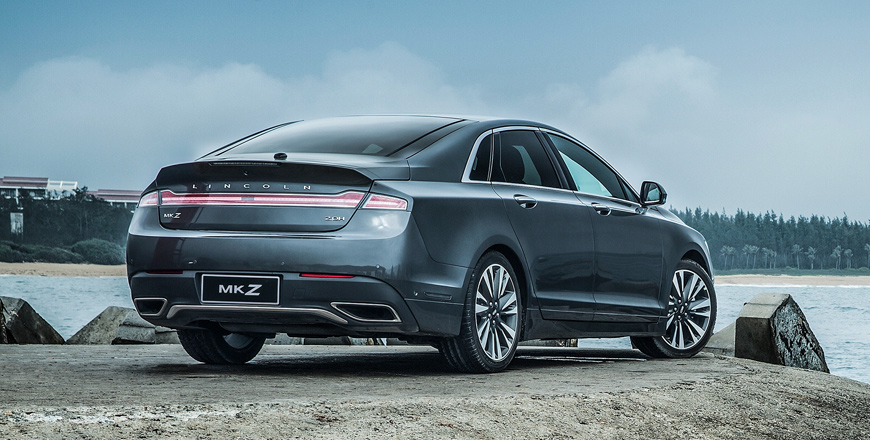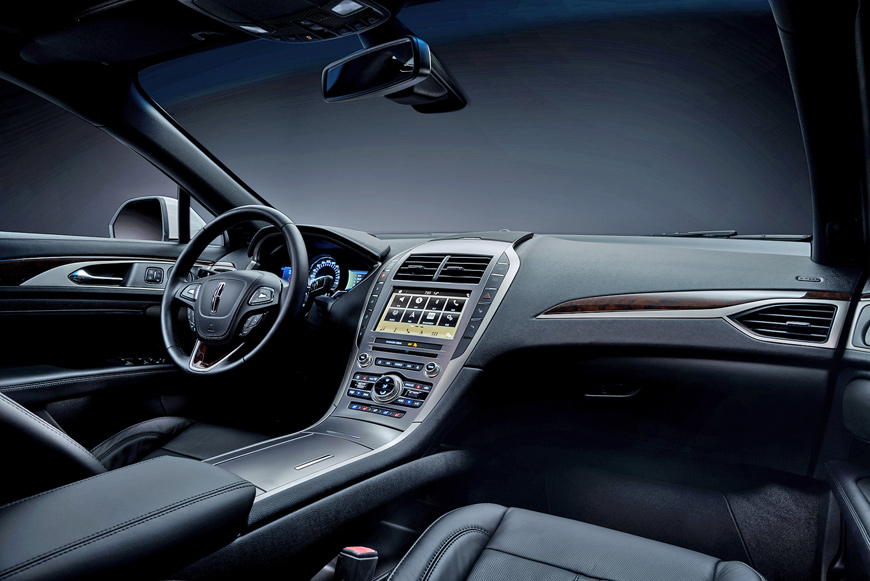- Mix
- Tue-2021-07-06 | 07:30 pm

The more up-market sister model to one of Jordan’s most popular cars in recent years, the Lincoln MKZ Hybrid is built on the same platform and uses the same mechanicals as the ubiquitous Ford Fusion Hybrid, but is wrapped in a more luxurious package. If not quite as massively represented on the road as its Blue Oval badge sister, the MKZ Hybrid is nevertheless an ever more common sight on Jordanian streets, especially in its final recent face-lifted guise.
Contemporary yet conservative
First introduced in 2013 and aesthetically updated in 2016, the second generation MKZ was finally put out to pasture as of last year as Lincoln moves away from saloon cars to an SUV and crossover-oriented line-up. That said, recent discontinuation, however, doesn’t seem to have put a dent in the MKZ Hybrid’s popularity as an independent import, with its familiar and widely available shared parts, combined with a plush interior and more elegantly dramatic design making it a compelling alternative to the Fusion Hybrid.
Contemporarily modern and fresh with its flowingly low roofline, short rear deck and defined ridges, crease lines and waistline, the MKZ nevertheless incorporates a vaguely retro flavour, with details like slim full width rear lights being juxtaposed with sharply jutting and futuristically sporty bootlid. Classy yet distinctly American, the MKZ’s design meanwhile took on a more elegant look as of 2016 with the adoption of a new grille reminiscent of the Lincoln Continental, in place of the previous and somewhat divisive ‘Eagle grille’ design.

Combined confidence
Behind its more conservative, upright and snouty grille, and its more prominently browed headlights, the MKZ Hybrid is powered by a naturally-aspirated 2-litre four-cylinder engine running on an efficient Atkinson cycle. Producing 141BHP at 6,000rpm and 129lb/ft at 4,000rpm, this is joined with an electric motor developing 118BHP, for a combined system output of 188BHP and 177lb/ft powering the front wheels. Responsive at low speed, with almost instant electric output provoking a hint of torque steer, the MKZ Hybrid accelerates through 0-100km/h in around 9-seconds.
Starting off in electric mode with the combustion engine joining soon after, the MKZ Hybrid can drive under exclusive electric power for brief moments, and at speeds up to 137km/h. Using both regenerative braking and combustion engine to recharge its battery, the MKZ Hybrid is confidently capable on brief steep inclines, but becomes less muscular or responsive when batteries are depleted on more sustained and more assertively driven hill climbs, at which point the combustion engine has its work cut out with propelling 1,720kg uphill and recharging duties.
Confident cruiser
Contributing greatly to reduced urban fuel consumption, the MKZ Hybrid’s electric motor also helps provide generous torque for confident overtaking on motorways. Meanwhile, it is an accomplished highway cruiser with a stable, composed and reassuring ride quality. Driving its front wheels through continually variable transmission (CVT), the MKZ is smooth and efficient, but not as engaging or rewarding to drive as combustion engine versions with a torque converter automatic gearbox, as like any CVT, the MKZ Hybrid’s transmission works to maintain an efficient engine speed, rather accurate throttle responsiveness.
Perhaps not the fastest in its class, the MKZ Hybrid is, however, among the sportiest and more rewarding drives in a mostly uninspired and largely un-sporty mid-size front-drive hybrid saloon segment. Accurate, responsive and quick, but without the excellent feel, feedback and intuitive nuance of its European Ford hatchback cousins, the MKZ Hybrid’s steering nevertheless complements its decent in-segment handling ability. Turning in more tidily and cornering with more agility, the MKZ Hybrid feels more competent and focused through sweeping bends than many competitors.
Classy comfort
Sportier than most in its class if not an outright sports saloon, the MKZ Hybrid retains much of its petrol variants’ dynamic abilities, despite the additional weight of its hybrid components, mostly concentrated in under-boot batteries. Settled yet comfortable over imperfections and a mostly forgiving ride, even with 245/45R18 tyres, the MKZ Hybrid is reassuring and buttoned down and well contains body roll through fast corners. Braking meanwhile might lack initial feel, but smoothly transitions between regenerative and mechanical functions, and provides reassuring stopping power.
Refined, smooth and quiet, the MKZ Hybrid’s calm and classy cabin has a distinctly more luxurious ambiance than its Ford sister, and features quality materials, tasteful design and attention to detail. Well-equipped with convenience and safety features, the MKZ Hybrid’s driving position is well-adjustable and hunkered down. Reasonably spacious, the MKZ offers good front headroom and cabin width, but with its rakishly low and angled roofline, rear headroom is not quite as roomy as that of the Fusion, while under-floor batteries reduce minimum cargo volume to 314-litres.

TECHNICAL SPECIFICATIONS
Engine: 2-litre, transverse Atkinson cycle all-aluminium 4-cylinders
Electric motor: permanent magnetic AC synchronous motor
Bore x stroke: 87.3 x 83mm
Compression ratio: 12.3
Valve-train: 16-valve, variable timing, DOHC
Battery, capacity/power: Lithium-ion, 1.4kWh/35kW
Gearbox: Continuously variable transmission (CVT) auto, front-wheel-drive
Final drive: 2.91:1
Power – petrol engine, BHP (PS) [kW]: 141 (143) [105] @6,000rpm
Power – electric motor, BHP (PS) [kW]: 118 (119) [88]
Power – combined, BHP (PS) [kW]: 188 (190) [140]
Torque – petrol engine, lb/ft (Nm): 129 (175) @4,000rpm
Torque – combined, lb/ft (Nm): 177 (240)
0-100km/h: approximately 9-seconds (estimate)
Electric mode top speed: 137km
Fuel consumption, city/highway/combined: 5.73-/6.03-/5.88-litres/100km (estimates)
Fuel capacity: 51-litres
Length: 4,930mm
Width: 1,864mm
Height: 1,475mm
Wheelbase: 2,849mm
Track, F/R: 1,582/1,574mm
Headroom, F/R: 962/929mm
Legroom, F/R: 1,125/939mm
Shoulder room, F/R: 1,465/1,404mm
Seating capacity: 5
Luggage volume: 314-litres
Kerb weight: 1,720kg
Steering: Electric-assisted rack & pinion
Steering ratio: 14.8:1
Lock-to-lock: 2.7-turns
Turning circle: 11.88-metres
Suspension: MacPherson struts/multi-link
Brakes, F/R: Ventilated discs, 300 x 28mm/discs, 302 x 11mm, regenerative braking
Tyres: 245/45R18










